What to do when buying defective clothes from Vietnam?
Have you just bought defective clothes from Vietnam? Don’t worry! There are many people facing the same situation as you. In this article, we will guide you through simple ways to solve this problem and protect your consumer rights effectively.
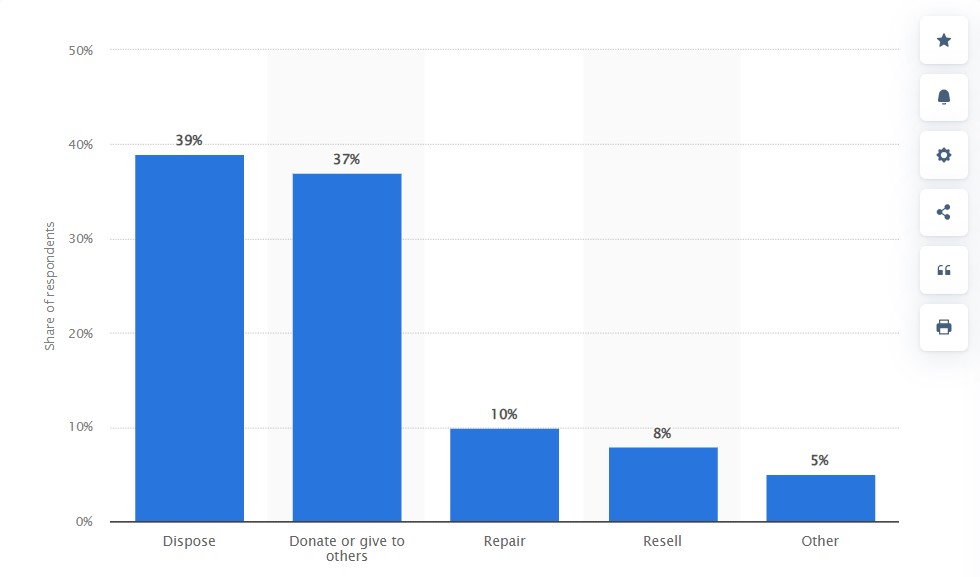
This statistic shows what consumers did with old or damaged clothing worldwide in 2018. As we can see, 39% of respondents stated that they disposed of their old or damaged clothing and that is not a small number. In comparison, 8% of respondents chose to resell their old or damaged clothing items.
And it’s a complete waste of money and harmful to the environment. So, what can you do when buying defective clothes from Vietnam?
How to Identify Defective Clothes?
There are several quality-related issues in garment production that you can easily identify:
- Sewing defects – Such as open seams, incorrect stitching techniques, mismatched thread colors, skipped stitches, fabric puckering, incorrect tension, and raw edges are some sewing defects that need attention.
- Color discrepancies – Defects in color may include differences between the final garment color and the displayed sample, improper color matching of accessories, and mismatches in dye lots between products.
- Size discrepancies – Incorrect size labeling, size inconsistencies between garment components, for example, XL sleeves with an L body.
- Garment defects – During production, defects such as faulty zippers, uneven seams, loose buttons, raw edges, incorrect buttonholes, uneven sections, mismatched seams, and fabric color discrepancies can occur.
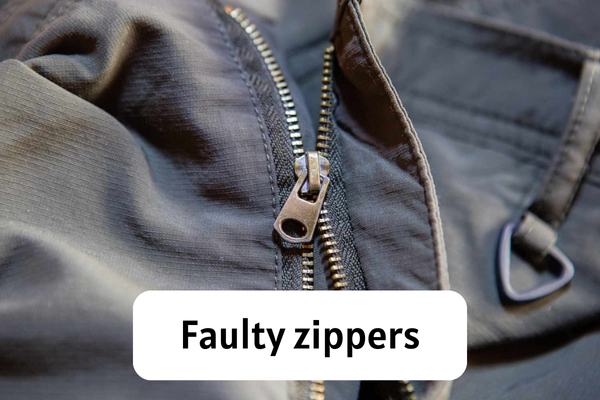
However, it becomes easier to overlook these issues if you have to check many items, especially when buying wholesale. Checking will take more time and effort, and cannot be as meticulously detailed as when inspecting a few items.
Your Rights as a Consumer
Consumer rights and protection in Vietnam
As a consumer in Vietnam, you have certain rights and protections when purchasing goods, including clothing. These rights are designed to ensure that you receive products of satisfactory quality and that your interests are protected in the event of errors or other problems. Here are some key consumer benefits you should know:
- Right to information: You have the right to accurate and transparent information about the clothes you are purchasing. This includes details about the product’s ingredients, dimensions, country of origin and any potential risks associated with using the product. If the seller does not give you this complete information, perhaps they are hiding something?
- Right to quality: You have the right to expect that the clothing you purchase meets certain quality standards. They must not have defects like the signs above.
- Right to safety: Your safety is the most important thing. Clothing must not pose any health or safety risks to you or your family. They must be made of safe materials and comply with relevant safety standards.
Laws and regulations protect consumers from defective products
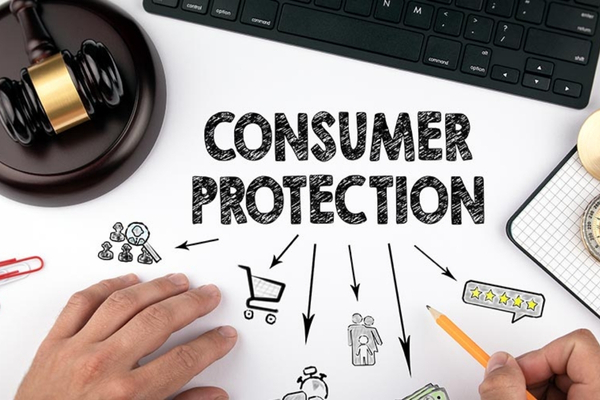
In Vietnam, there are specific laws and regulations to protect consumers against defective products. Including:
- Law on the Protection of Consumer Rights (LPCR): LPCR regulates the rights and obligations of consumers and sellers. It covers many different aspects of consumer protection, including product quality, advertising practices and dispute resolution.
- Law on product and goods quality: This law regulates standards and requirements for product quality, labeling and packaging. It aims to ensure that products available on the market meet certain quality standards and do not pose risks to consumers.
- Warranty regulations: There are regulations that require sellers to provide warranties for certain types of products, including clothing. These warranties state the term and conditions under which the seller will repair, replace or refund a defective product.
Steps to Take When Buying Defective Clothes
Buying defective clothes can be frustrating, but it’s not too late to take steps to address the issue and find a solution. Here’s what you can do:
Document the defects
When you notice defects in the clothes you purchased, it’s important to document them. Take clear photos or videos of the issues, such as faulty stitching, color fading, or sizing problems. Also, keep the receipt as proof of purchase. You wouldn’t want to report a product without a receipt and struggle to prove that you bought it.
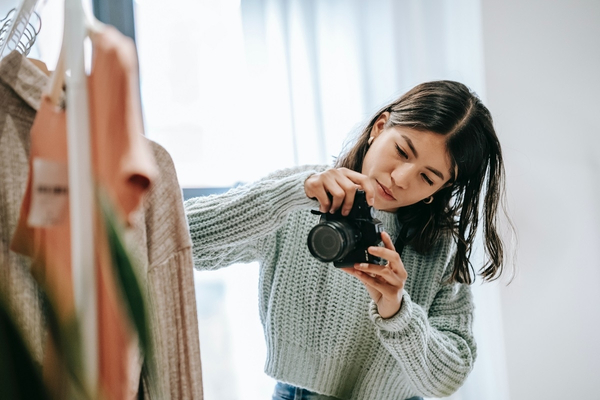
Contact the seller
Reach out to the seller or retailer from whom you bought the clothes. Explain the problem politely and provide them with the evidence you’ve gathered. You can do this through email or by calling their customer service. Usually, you can find this contact information on the seller’s website. Be clear about what you expect from a resolution, whether it’s a refund, replacement, or repair.
Report the issue
If the seller doesn’t respond or cooperate, you may need to report the issue. Look for any higher-level management contacts or customer support team of the seller and submit your complaint to them. Additionally, some sellers have dedicated complaint resolution departments that you can reach out to. Don’t give up, be persistent in your efforts to resolve the issue.
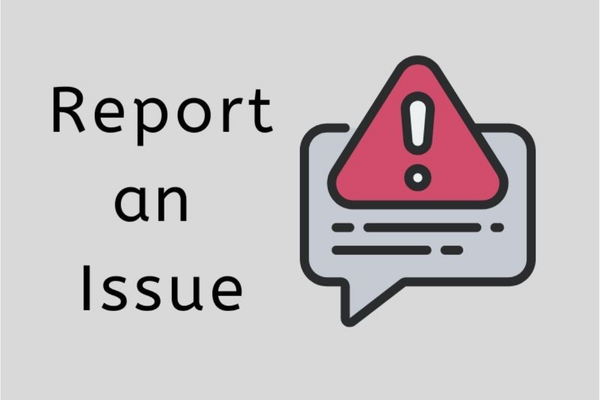
Seek legal assistance
If you have exhausted all your options and the seller still refuses to address the problem, you might consider seeking legal assistance. These are your rights when buying clothes in Vietnam. Consult with a lawyer specializing in consumer rights or contact a local consumer protection agency. They can provide you with guidance on the next steps to take and help you navigate the legal process if necessary.
Normally, many people are afraid of having to go through many complicated legal procedures, so they have to pity themselves and throw away defective products. However, when you buy wholesale clothing, too many errors will affect your cash flow, increasing costs and decreasing profits. Therefore, stand up and don’t be afraid to take legal procedures to protect yourself and other consumers.
Avoid defective clothing in the future
No one wants to constantly encounter clothing mistakes, so taking measures to prevent them from happening again is essential. And to keep the rate of defective purchases low, here are some tips to help you avoid buying defective clothing in the future:
Research the seller
Before making a purchase, you should research the seller’s reputation and reliability. Look for information about their track record, customer feedback, and any previous complaints. This can give you an idea of their reliability and whether they have a history of selling quality products.
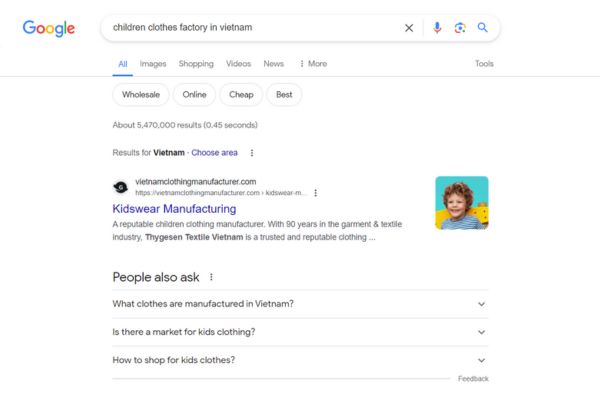
Read reviews
Make it a habit to read customer reviews and ratings before buying clothes. These reviews and feedback can provide valuable insights into product quality, durability, and overall satisfaction. Pay attention to both positive and negative reviews to get a balanced perspective.
Ask, ask and ask
Don’t hesitate to ask questions before buying. Ask about the seller’s quality control procedures and how they handle returns or exchanges. Ask about the materials used, manufacturing process, and any specific care instructions. If they hesitate and can’t answer clearly then it could be a sign that they are not a professional factory.
Consider reputable brands
When in doubt, consider choosing a reputable brand or manufacturer. Reputable brands often have reputations to uphold and tend to prioritize quality control more. While they may be a little more expensive, the extra investment may be worth it to ensure better materials and workmanship.
|
In addition, you should prioritize choosing factories with guaranteed policies like K-Embroidery. We have a policy to ensure both product quality and shipping time. However, production is not always perfect, there can still be errors. But for defective products, we have a clear product return and refund policy. However, you need to note a few issues before returning as follows:
And for more information about our refund policy, click here. Not only that, to show K-Embroidery is a reputable manufacturer, we have a strong relationship with the Vietnamese government and has received many international certificates for its brand and products. If you want to know more, contact our Sales team at WhatsApp: +84 85 555 5961. |
Remember, spending a little extra time and effort can help you avoid the disappointment of buying poor quality clothing.
Conclusion
Buying bad clothes not only affects short-term but also long-term benefits. If you are someone who buys wholesale clothes in large quantities, just a 5% defective product rate will reduce your revenue by 5%, while costs remain the same.
Therefore, to avoid buying bad products, you should look for reputable suppliers right from the first step. Maybe their products are a little more expensive than the market, but this is necessary for you to dispel the fear of buying bad products and import the best quality products.


